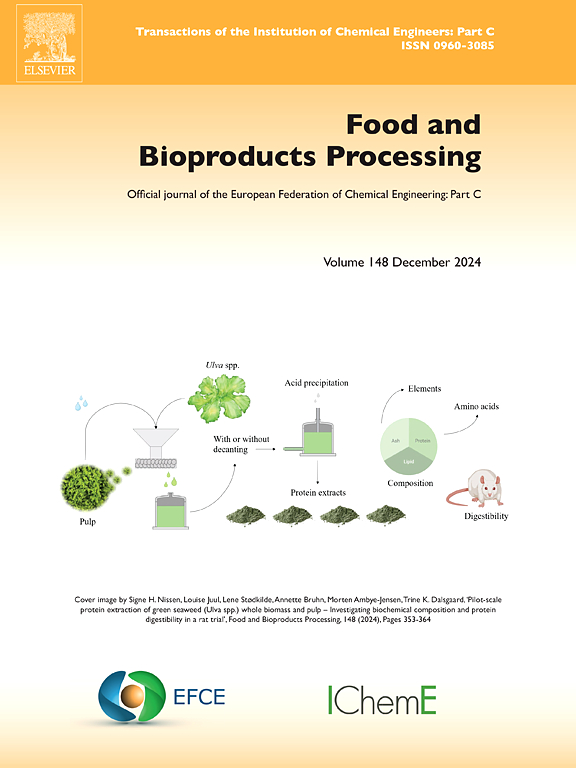Dynamic simulation of sulfur aroma compound extraction from dilute solutions using membrane-based solvent extraction
IF 3.4
2区 农林科学
Q2 BIOTECHNOLOGY & APPLIED MICROBIOLOGY
引用次数: 0
Abstract
An interesting horizon for solving odorous effluent problems in food industries is open for finding non-destructive eliminating treatment. This study focused on modeling odorous aromatic compounds recovery using hollow fiber membrane contactors (HFMCs). Then, the constructed model was implemented in CFD software coupled with Matlab. Feed flow rate and composition, membrane surface area and porosity and aroma compounds’ partition coefficients parameters’ impact on the HFMC performance were found as investigated. The average absolute relative error of the simulation compared with the experimental data was calculated as 10 % reveals the developed model is suitable for HFMCs separation performance prediction. This makes the developed model/simulation an appropriate tool for the prediction of other compounds recovery using HFMCs.
膜基溶剂萃取萃取稀溶液中硫芳香化合物的动态模拟
寻找非破坏性的消除处理方法是解决食品工业中恶臭废水问题的一个有趣的前景。研究了中空纤维膜接触器(HFMCs)对恶臭芳香族化合物的回收效果。然后,在CFD软件中结合Matlab对所构建的模型进行了仿真。考察了进料流量和组成、膜表面积和孔隙率以及芳香化合物分配系数等参数对HFMC性能的影响。仿真结果与实验数据的平均绝对相对误差为10 %,表明所建立的模型适用于hfmc的分离性能预测。这使得所开发的模型/模拟成为使用hfmc预测其他化合物回收率的合适工具。
本文章由计算机程序翻译,如有差异,请以英文原文为准。
求助全文
约1分钟内获得全文
求助全文
来源期刊

Food and Bioproducts Processing
工程技术-工程:化工
CiteScore
9.70
自引率
4.30%
发文量
115
审稿时长
24 days
期刊介绍:
Official Journal of the European Federation of Chemical Engineering:
Part C
FBP aims to be the principal international journal for publication of high quality, original papers in the branches of engineering and science dedicated to the safe processing of biological products. It is the only journal to exploit the synergy between biotechnology, bioprocessing and food engineering.
Papers showing how research results can be used in engineering design, and accounts of experimental or theoretical research work bringing new perspectives to established principles, highlighting unsolved problems or indicating directions for future research, are particularly welcome. Contributions that deal with new developments in equipment or processes and that can be given quantitative expression are encouraged. The journal is especially interested in papers that extend the boundaries of food and bioproducts processing.
The journal has a strong emphasis on the interface between engineering and food or bioproducts. Papers that are not likely to be published are those:
• Primarily concerned with food formulation
• That use experimental design techniques to obtain response surfaces but gain little insight from them
• That are empirical and ignore established mechanistic models, e.g., empirical drying curves
• That are primarily concerned about sensory evaluation and colour
• Concern the extraction, encapsulation and/or antioxidant activity of a specific biological material without providing insight that could be applied to a similar but different material,
• Containing only chemical analyses of biological materials.
 求助内容:
求助内容: 应助结果提醒方式:
应助结果提醒方式:


